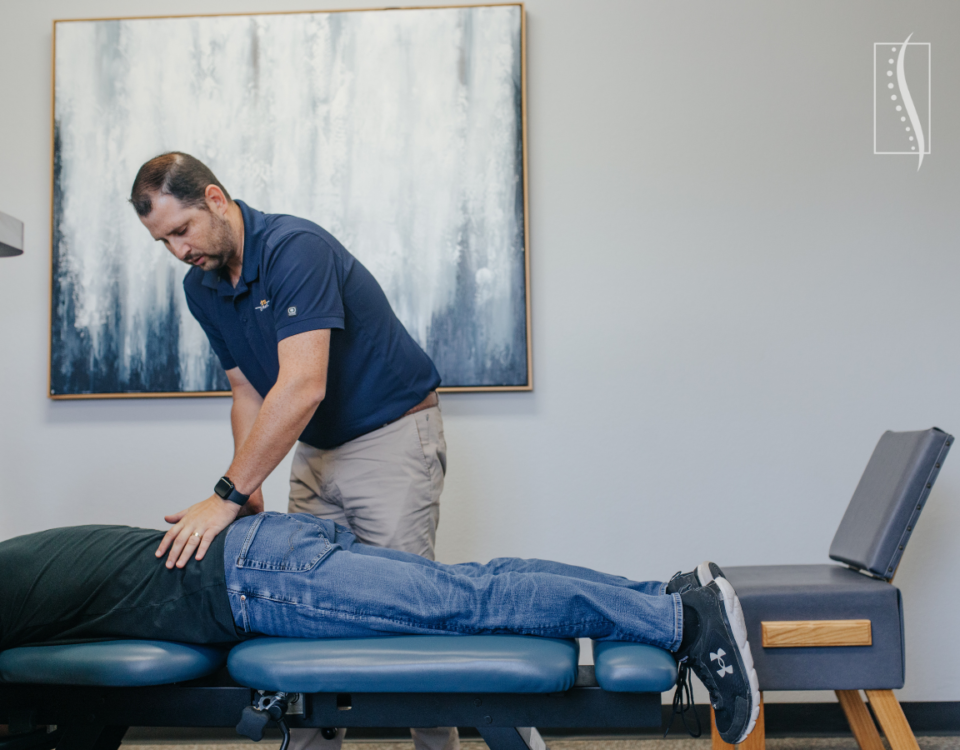
Non-Surgical Carpal Tunnel Syndrome Treatment
January 24, 2024
Health Habits in the New Year: Tips for a Healthier You
February 8, 2024In the digital age, our constant interaction with technology has brought about a new concern – tech neck. This phenomenon refers to the strain and discomfort experienced in the neck and upper spine due to prolonged use of smartphones, tablets, and computers. As technology becomes increasingly integrated into our daily lives, understanding the symptoms of tech neck and how to treat it at home becomes crucial for maintaining overall well-being.
What is Tech Neck:
Tech neck, or text neck, is a modern condition characterized by the stress and strain on the neck, shoulders, and upper spine. This is caused by the extended use of handheld devices and computers. The constant downward gaze while using these devices can lead to poor posture. Poor posture can result in misalignment and tension in the cervical spine.
Symptoms:
Identifying the symptoms is essential for early intervention. Common signs include neck pain, stiffness, and soreness. Individuals may also experience headaches, shoulder pain, and tingling or numbness in the arms. These symptoms often arise due to the increased pressure on the cervical spine caused by the forward-leaning position during device use.
How to Treat Symptoms at Home:
At home treatment involves a combination of lifestyle adjustments and targeted exercises. Simple changes, such as holding devices at eye level, taking regular breaks, and practicing good posture, can alleviate strain. Applying ice or heat to the affected area can provide immediate relief, while over-the-counter pain relievers may help manage discomfort. It’s crucial to rest the neck and avoid prolonged device use to allow the muscles and ligaments to recover.
Stretches to Alleviate Symptoms:
Incorporating specific stretches into your routine can be an effective way to alleviate tech neck symptoms. Neck tilts, side-to-side stretches, and gentle neck rotations help release tension and improve flexibility. Shoulder rolls and chin tucks are also beneficial for reducing strain in the upper back and neck. Consistent practice of these stretches can contribute to improved posture and decreased discomfort associated with tech neck.
Prevention:
Preventing tech neck involves adopting healthy habits to minimize strain on the neck and spine. Regularly practicing neck exercises, maintaining proper posture, and taking breaks during prolonged device use are essential preventive measures. Additionally, investing in ergonomic accessories, such as adjustable stands for devices and ergonomic chairs, can further reduce the risk of developing tech neck.
Seeking Professional Help:
While home remedies and lifestyle adjustments can alleviate mild cases of tech neck, severe or persistent symptoms may require professional intervention. Consulting with a healthcare provider, such as a primary care physician or orthopedic specialist, can help diagnose the extent of the condition and determine an appropriate course of action. They may recommend physical therapy to address muscle imbalances and improve overall posture.
Chiropractic care is another viable option for managing tech neck. Chiropractors specialize in musculoskeletal issues and can provide adjustments to realign the spine, reducing strain and promoting optimal function. These adjustments aim to restore the natural curvature of the spine and alleviate tension in the neck and shoulders.
When considering chiropractic care, it’s essential to consult with a qualified and licensed chiropractor. They will conduct a thorough examination, discuss the patient’s medical history, and tailor a treatment plan to address the specific needs of the individual. Chiropractic care can be a valuable addition to the overall management of tech neck, offering targeted interventions to address structural issues contributing to discomfort and pain.
As technology continues to play a significant role in our lives, understanding and addressing the impact of tech neck is crucial for maintaining musculoskeletal health. By recognizing the symptoms, implementing at-home treatments, incorporating targeted stretches, and adopting preventive measures, individuals can mitigate the effects of tech neck and promote overall well-being in the digital age.



